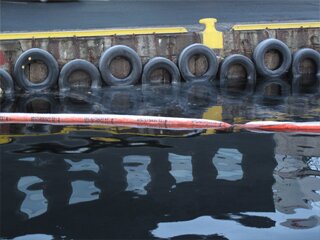Oil spills in ports (2006)
22 May 2014

Dr Michael O'Brien
Article in Ports & Harbors, July 2006, pp.34-35
Whilst large oil spills arising from shipping accidents often make dramatic news, most oil spills are small and originate in or near ports. ITOPF oil spill statistics for tankers, for instance, reveal that 80% of all tanker spills are less than 7 tonnes and that 80% of these arise from operational accidents such as those that might occur during loading, discharging, and bunkering.
There are international compensation regimes such as the Civil Liability Convention ("CLC") and the International Oil Pollution Compensation Fund ("IOPCF") which are available in many countries to compensate for oil pollution damage caused by tanker spills and these include reasonable response costs. The incident and response are, nonetheless, often disruptive, especially to commercial port activity . Response operations in most places have become much more efficient in recent decades as contingency plans, specialised response equipment and trained response teams have been put in place. One additional area where lessons could be learned is the way in which the design of port structures themselves affect the efficiency of clean-up work. Given ITOPF's role on site in assisting port authorities to implement technically reasonable response operations during a spill incident, the aim of this article is to share some of ITOPF's international experiences, and thus to assist others, before an incident, in preparing efficient plans and setting realistic expectations of the standard of cleaning likely to be achieved.
Categories: Response Techniques, Papers
